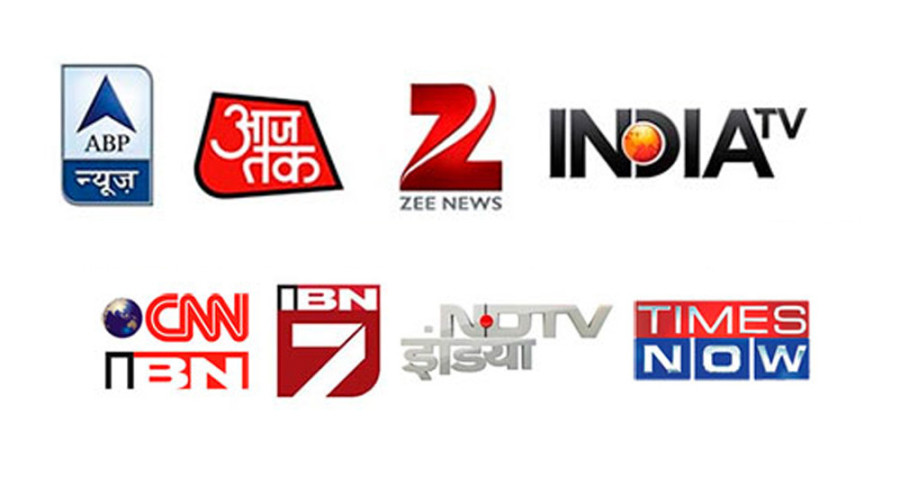Editorial
Fake it like Indian TV
The only lesson one can learn from India’s nationalist television anchors is how not to be rowdy like them.
In a short video clip doing the rounds on social media in the past couple of days, Janata Samajwadi Party leader and former foreign minister Upendra Yadav is heard answering in the affirmative an Indian television journalist’s query as to whether Prime Minister KP Sharma Oli had been 'honey-trapped' by Hou Yanqi, the Chinese ambassador to Nepal. Going by the slight hesitation in his response, Yadav possibly failed to understand the meaning of the phrase. But he still played into the hands of the journalist and ended up trolling the dignitaries as well as himself. Notwithstanding Yadav’s callous response, characteristic of Nepali leaders who keep putting their feet in their mouths, there is no questioning the moral integrity of Prime Minister Oli and Ambassador Hou, both of whom have been targets of a vicious disinformation campaign run by a section of the right-wing, nationalist Indian television media in the past few weeks.
Rattled by Nepal's recent updating of its political and administrative map by including the disputed territories of Lipulekh, Limpiyadhura and Kalapani, the Indian nationalist television channels have begun an all-out war against Prime Minister Oli. Their accusations vary according to how farther away a particular propagandist-cum-journalist is willing to go from the truth: Oli is presumably working at China's behest, is selling Nepal to China, is pitting China against India, or is even cashing in on Pakistan's anti-India sentiment to destabilise the southern neighbour.
Each day, one nationalist media channel or the other comes up with a new—and invariably false—propaganda against Oli. Sitting in their Delhi or Mumbai studios, they do not hesitate to announce the date and time of Oli's resignation, some of them even asking him to step down. Oli, it seems, is the new enemy they must fight each day to garner higher television rating points for themselves. In becoming their target and helping them gain higher TRPs, Oli has, in fact, become a steady source of their bread and butter. As the prime minister of the country, Oli is rightly facing brickbats and bouquets both from the Nepalis. But the brazenness with which the propaganda channels have castigated Oli is totally uncalled for. In showing Oli in a negative light to satisfy their bloated nationalist egos, the channels and their journalists have arguably raised his approval ratings on the home turf.
In running the disinformation campaign, the propagandists have also been outraging the modesty of Ambassador Hou. The ambassador’s political activities may be questioned and debated through diplomatic paradigms as has always been the case when Indian diplomats are seen hobnobbing with political leaders during crises in Nepali politics. But calling the Chinese ambassador a vishkanya, or a poisonous woman, and flashing her photographs alongside Oli's only exposes the deep misogyny that runs through Indian newsrooms. Ambassador Hou's rights to dignity as a professional, woman and human being must be sternly defended, and the media trial must be condemned by all sections of society.
The campaign also exposes the deep crisis of credibility that characterises Indian television media today. They have long discarded the idea that their only loyalty should be towards truth, and not towards any individual, party or government. The farther they deviate from seeking the truth, the more they fail in their duty to be the eyes and the ears for the citizens. As the trend of fake news and alternative truths challenges the traditional media industry, it is all the more important for mainstream media to stick to the primary purpose of journalism: Providing citizens with unadulterated information and helping make the world a better place rather than trying to turn it into a hellhole.




 9.12°C Kathmandu
9.12°C Kathmandu














